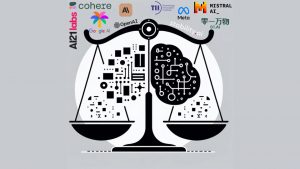In an era where digital interaction is king, organizations yet to embrace generative AI in their software or SaaS products stand at a pivotal crossroads. The trend towards more conversational, intelligent user interfaces is not just a passing fad—it’s a transformative shift in how we interact with technology. Imagine software that doesn’t just respond but converses, understands, and assists in unprecedented ways. This is the promise of integrating Large Language Models (LLMs) into business software, a move that can redefine customer engagement, user experience, and operational efficiency.
The Meteoric Rise of Large Language Models
In the last year, the landscape of artificial intelligence (AI) has been dramatically reshaped by the meteoric rise of LLMs. These sophisticated AI models have evolved rapidly, transitioning from experimental curiosities to essential components in a multitude of software and SaaS products. LLMs such as OpenAI’s GPT series have set new benchmarks in understanding and generating human-like text, making interactions with software more intuitive, natural, and conversational than ever before.
This remarkable evolution has been marked by significant milestones: the models have grown in size and complexity, their ability to understand context and nuance has deepened, and their applications have expanded into diverse fields such as customer service, content creation, and even complex problem-solving. The rapid advancement in LLMs signifies a paradigm shift in AI capabilities, ushering in a new era where conversational AI is not just a luxury but a necessity for businesses aiming to stay at the forefront of innovation and customer engagement. As organizations consider integrating these technologies into their digital infrastructure, understanding the nuances of deploying LLMs becomes critical to unlocking their transformative potential.
Tailoring AI to Your Unique Needs
As organizations venture into the realm of LLMs, two key concepts emerge as critical tools for customization: Fine-Tuning and Retrieval-Augmented Generation (RAG). These techniques are pivotal in transforming a generic LLM into a specialized asset tailored to specific business needs and contexts. Let’s delve into the essence of these techniques, understanding how they empower businesses to mold AI capabilities to fit their unique operational landscapes and user interactions.
Fine-Tuning: This is the process of training a pre-trained model on a new, typically smaller, dataset to specialize it for specific tasks or domains. It’s akin to giving the model a ‘focused education’ in a particular field.
Retrieval-Augmented Generation (RAG): RAG combines the generative power of models like GPT with an external knowledge retrieval step. This allows the model to pull in relevant information from a database or dataset, including files, documents, etc, making its responses more informed, up-to-date and tailored to a specific body of knowledge.
While fine-tuning modifies the core understanding of a model, making it more domain-specific, RAG enhances its ability to interact with external information sources, broadening its scope of knowledge and relevance. The choice between these approaches depends on the particular needs of an organization—whether they require deep specialization within a narrow domain, or broad adaptability and responsiveness to diverse, evolving datasets. Moreover, in particular scenarios these two tools can be combined to get the best of both worlds.
In this article we focus on fine-tuning, which is the one among the two techniques that is harder to customize, and which requires a tedious part to generate the datasets for grounding the LLM to a specific context. This process is tricky, especially for teams that lack expertise in linguistics and/or natural language processing pipelines. At Process Talks we have both the tooling and the expertise to carry out this task, and want to share with you the lessons learnt so far.
Primary alternatives for LLM adoption through fine-tuning
Companies that opt for starting a project on fine-tuning LLMs must navigate the complexities of deploying these advanced AI models, weighing options between established giants like OpenAI and the burgeoning world of open-access LLMs. Each path offers unique advantages and demands careful consideration of factors like cost, scalability, and technical expertise. We will now delve into the nuances of each one of these two options.
Option 1: Customizing commercially available models
Commercially available models like OpenAI offer a straightforward path to customizing LLMs through fine-tuning its base models like GPT. Fine-tuning allows businesses to adapt these models to their specific needs, such as domain-specific data or unique response styles. The provided APIs facilitate this process, enabling easy integration of advanced AI capabilities into various applications. To facilitate the analysis, we will focus on OpenAI, since it currently dominates the market in this alternative. A similar analysis applies to competitors like Google (via its new model Gemini).
Pros of customizing OpenAI’s models:
Robust Base Models: OpenAI’s models are among the best in terms of performance and capabilities.
User-Friendly APIs: This simplifies both fine-tuning (that is, the training of the model) and inference (i.e., using the fine-tuned model for processing new data), making it accessible even to those with limited technical expertise.
High Customizability: The models can be fine-tuned to meet specific requirements, ideal for tailored applications.
Cons of customizing OpenAI’s models:
Cost: Usage of OpenAI’s models and APIs is not free, and the cost can be significant, especially with extensive use of advanced models or heavy fine-tuning.
Dependence on External Service: Relying on OpenAI’s infrastructure, can lead to potential issues with data privacy, control, and long-term availability.
Limited Model Customization: While fine-tuning is possible, the underlying model architecture cannot be altered, which might limit certain types of customization.
Option 2: Leveraging Open Access LLMs
Open-source models like Falcon, Llama, and Mistral provide a cost-effective and flexible alternative. These models come in various sizes and capabilities, suitable for different scales of applications. Open-source platforms like HuggingFace facilitate access to these models and offer resources for customization and deployment.
Pros of leveraging open access LLMs:
Cost-Effectiveness: No licensing fees, with costs mainly revolving around the hardware required for running these models.
Variety of Models: Access to a range of models suitable for different needs and scales.
Community and Support: Platforms like HuggingFace offer standardized access, along with community support, documentation, and tutorials.
Cons of leveraging open access LLMs:
Hardware Requirements for Larger Models: Running bigger models requires significant hardware investments.
Expertise and Technical Know-How: Requires knowledge in fine-tuning, optimizing, and deploying these models, which can be a barrier for some organizations.
Rapid Evolution of the Field: The fast-paced nature of AI development can make it challenging to stay updated and manage dependencies effectively.
In summary, both deployment options for Large Language Models – using commercial or open-access models – have their own set of advantages and challenges. Often, the difficulty lies in the fact that not all factors influencing the decision are clear at the start of the project.
Navigating LLM Deployment with Process Talks
In the complex and rapidly evolving landscape of deploying LLMs, making the right decisions can be daunting for any organization. This is where Process Talks steps in as a vital ally. Our expertise and guidance can help demystify the intricacies of LLM deployment, ensuring that your business makes informed, strategic decisions tailored to your unique needs. Whether it’s choosing between fine-tuning and RAG, understanding the cost implications, or handling the technical aspects of implementation, Process Talks provides the support and insights necessary to seamlessly integrate LLMs into your organizational framework. Let us partner with you to unlock the full potential of conversational AI, transforming the way you interact with your customers and streamline your operations. Want to start a generative AI project ? Book a slot with us.








